Description
DESCRIPTION:
Terazosin hydrochloride is a selective blocking drug with a long lasting action towards the adrenergic receptors alpha-1. Chemically it is a derivative of quinazoline having the following formula: 2-[4-(-tetrahydro-2-furanyl)-carbonyl] 1-piperazinyl 6,7dimethoxy-4-quinazolineamine monohydrochloride dihydrate.
PHARMACOLOGICAL ACTIONS:
Pharmacodynamics
Terazosin is a competitive / selective alpha-1-blocking agent producing reduction of the peripheral vascular resistance and smooth muscle relaxation.
Benign Prostatic Hyperplasia (BPH):
The symptoms associated with BPH are related to bladder outlet obstruction, which is comprised of two underlying components:a static component due to an increase in prostate size and a dynamic component which is due to an increase in smooth muscle tone in the prostate and bladder neck, leading to constriction of the bladder outlet. Since the bladder body contains few alpha-1 adrenoreceptores while the bladder neck and the prostate contain high density of alpha-1-adrenoreceptores, selective alpha-1 blockade following administration of terazosin decrease the dynamic component of BPH by decreasing bladder outlet resistance without impairing bladder contraction and decreasing prostate muscular tone leading to reduction in symptoms of BPH and improvement of urine flow rates. Clinical studies have demonstrated that the size of the prostate does not correlate with the severity of BPH.
Hypertension:
Since terazosin develops a selective alpha-1 blocking action, it causes a decrease in blood pressure by decreasing total peripheral vascular resistance. Terazosin decreases blood pressure gradually within 15 minutes following oral administration. The hypotensive action of the drug produced by its daily single dose is clinically manifested in an appreciable way during the whole period of 24 hours. The reduction of blood pressure following the oral daily dose manifests itself gradually; the eventual occurrence of orthostatic effects during the first day of therapy is comparable to that observed with other quinazoline derivatives. Terazosin has proved to possess the same efficiency of other antihypertensive preparations with a clear therapeutic activity.
BPH and Hypertension:
On long term therapy, terazosin did not induce tolerance in any of the two indications. It is known that quinazoline derivatives, like terazosin, induce positive effects on the serum lipids decreasing significantly total cholesterol, LDL, VLDL, and LDL/cholesterol ratio and a favourable reduction of the triglyceride levels. This action represents an advantage with respect to diuretics and beta-blocking drugs which, as known, have unfavourable effects on these parameters.
Since the arterial hypertension and the increase of serum lipids are strictly related to the pathology of the coronary, the positive effect exerted by terazosin both on the arterial pressure and on the lipids, may result in reduction of the risk factors for coronary pathies. The long term therapy with terazosin does not produce any clinical significant changes in the most important laboratory parameters as (glycemia, uricemia, creatininemia, azotemia and transaminasemia); therefore, the drug can be safely used in diabetics hyperuricemics, and elderly patients.
Interactions with the following drugs were never observed: thiazide diuretics, beta-blocking drugs, analgesics, non-steroidal anti-inflammatory drugs, hypoglycaemic drugs, antibiotics, anxiolytics and bronchodilators.
Pharmacokinetics
Terazosin administered orally is proved to be completely absorbed in man. The effect of food on the absorption of the drug is negligible. The plasma levels of the drug reach the peak concentration within one hour after oral administration, and then decline with a half-life of approximately 12 hours, thus maintaining levels of therapeutic effect allowing the drug to be administered only once daily.
INDICATIONS:
TERAZIN is indicated for the treatment of symptomatic benign prostatic hyperplasia (BPH).
TERAZIN is also indicated for the treatment of hypertension. TERAZIN can be used alone or in combination with other antihypertensive agents such as diuretics or beta-adrenergic blocking agents.
DOSAGE AND ADMINISTRATION:
Benign Prostatic Hyperplasia (BPH):
The usual recommended dose range is 5 to 10 mg administered once a day. Treatment should always be initiated with 1 mg dose (half 2 mg tablet) given at bed time, then the daily dose should be doubled every two weeks up to 5 mg or 10 mg per day.
If the drug administration is discontinued for several days, therapy should be reinstituted using the initial dosage regimen.
Hypertension:
The dosage of TERAZIN must be adjusted following the behaviour of the blood pressure values.
It is advisable to start treatment by 1 mg (half 2 mg tablet) at bedtime as a starting dose. After one to two weeks of treatment, the daily single dose can be increased to 2 mg, and then to 5 or 10 mg daily, until the desired value of the blood pressure is achieved. In case of complementing the therapy with a thiazide diuretic or a beta-blocking agent, it may be necessary to reduce the TERAZIN dose, according to doctor’s instructions.
CONTRAINDICATIONS
Ascertained or presumed hypersensitivity to quinazoline derivatives, history of orthostatic hypotension and in pregnancy and lactation.
Warnings:
Syncope and “first-dose” effect:
TERAZIN tablets, like other alpha-adrenergic blocking agents, can cause marked lowering of blood pressure, especially postural hypotension, and syncope in association with the first dose or first few days of therapy. A similar effect can be anticipated if therapy is interrupted for several days and then restarted. Syncope has also been reported with other alpha-adrenergic blocking agents in association with rapid dosage increases or the introduction of another antihypertensive drug. Syncope is believed to be due to an excessive postural hypotensive effect, although occasionally the syncopal episode has been preceded by a bout of severe supraventricular tachycardia with heart rates of 120-160 beats per minute. Additionally, the possibility of the contribution of hemodilution to the symptoms of postural hypotension should be considered.
To decrease the likelihood of syncope or excessive hypotension, treatment should always be initiated with a 1 mg dose of TERAZIN tablets, given at bedtime. The 2 mg, and 5 mg tablets are not indicated as initial therapy. Dosage should then be increased slowly, according to recommendations in the
Dosage and Administration section and additional antihypertensive agents should be added with caution. The patient should be cautioned to avoid situations, such as driving or hazardous tasks, where injury could result should syncope occur during initiation of therapy.
If syncope occurs, the patient should be placed in a recumbent position and treated supportively as necessary. The risk of the events is greatest during the initial seven days of treatment, but continues at all time intervals.
Priapism:
Rarely, terazosin and other α1-antagonists have been associated with priapism. Two or three dozen cases have been reported. Because this condition can lead to permanent impotence if not promptly treated, patients must be advised about the seriousness of the condition.
PRECAUTIONS:
General:
Prostatic Cancer: Carcinoma of the prostate and BPH cause many of the same symptoms. These two diseases frequently co-exist. Therefore, patients thought to have BPH should be examined prior to starting TERAZIN therapy to rule out the presence of carcinoma of the prostate.
Intraoperative Floppy Iris Syndrome (IFIS): Intraoperative Floppy Iris Syndrome (IFIS) has been observed during cataract surgery in some patients on/or previously treated with alpha-1 blockers. This variant of small pupil syndrome is characterized by the combination of a flaccid iris that billows in response to intraoperative irrigation currents, progressive intraoperative miosis despite preoperative dilation with standard mydriatic drugs, and potential prolapse of the iris toward the phacoemulsification incisions. The patient’s ophthalmologist should be prepared for possible modifications to their surgical technique, such as the utilization of iris hooks, iris dilator rings, or viscoelastic substances. There does not appear to be a benefit of stopping alpha-1 blocker therapy prior to cataract surgery.
Orthostatic Hypotension: While syncope is the most severe orthostatic effect of TERAZIN tablets, other symptoms of lowered blood pressure, such as dizziness, lightheadedness and palpitations, were more common and occurred in some 28% of patients in clinical trials of hypertension. In BPH clinical trials, 21% of the patients experienced one or more of the following: dizziness, hypotension, postural hypotension, syncope, and vertigo. Patients with occupations in which such events represent potential problems should be treated with particular caution.
ADVERSE REACTIONS
Benign Prostatic Hyperplasia
Adverse events with incidence rate at least 1%:
Asthenia, flu syndrome, headache, hypotension, palpitations, postural pypotension, syncope, nausea, peripheral edema, weight gain, dizziness, somnolence, vertigo, dyspnea, nasal congestion, rhinitis, blurred vision, amblyopia, impotence, urinary tract infection.
The adverse events are usually transient and mild or moderate in intensity, but sometimes are serious enough to interrupt treatment. The adverse events that are reasons for discontinuation of therapy by at least 0.5%:
Fever, headache, postural hypotension, syncope, nausea, dizziness, vertigo, dyspnea, blurred vision, amblyopia, urinary tract infection
Hypertension:
The adverse experiences where the prevalence rate is at least 5%, where the prevalence rate is at least 2%, or where the reaction is of particular interest:
Asthenia, back pain, headache, palpitations, postural hypotension, tachycardia, nausea, edema, peripheral edema, weight gain, pain-extremities, depression, dizziness, libido decreased, nervousness, paresthesia, somnolence, dyspnea, nasal congestion, sinusitis, blurred vision, impotence
Additional adverse reactions with incidence rate by at least 1%:
Chest pain, facial edema, fever, abdominal pain, neck pain, shoulder pain, arrhythmia, vasodilation, constipation, diarrhea, dry mouth, dyspepsia, flatulence, vomiting, gout, arthralgia, arthritis, joint disorder, myalgia, anxiety, insomnia, bronchitis, cold symptoms, epistaxis, flu symptoms, increased cough, pharyngitis, rhinitis, pruritus, rash, sweating, abnormal vision, conjunctivitis, tinnitus, urinary frequency, urinary incontinence primarily reported in postmenopausal women, urinary tract infection.
The adverse reactions are usually mild or moderate in intensity but sometimes are serious enough to interrupt treatment. The adverse reactions that are reasons for discontinuation of therapy with incidence rate at least 0.5%:
Asthenia, Headache, Palpitations, Postural Hypotension, Syncope, Tachycardia, Nausea, Peripheral Edema, Dizziness, Paresthesia, Somnolence, Dyspnea, Nasal Congestion, Blurred Vision.
HOW SUPPLIED
Terazin 2 tablets: A carton box containing 10 tablets in 1 aluminium/PVC strip and a pamphlet.
Terazin 5 tablets: A carton box containing 10 tablets in 1 aluminium/PVC strip and a pamphlet.
STORAGE:
Keep at a temperature not exceeding 30°C, in dry place.
Keep out of reach of children.
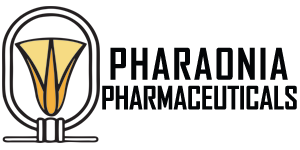




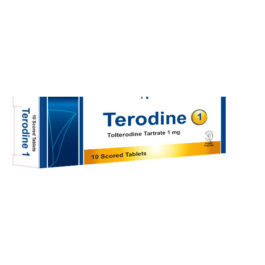
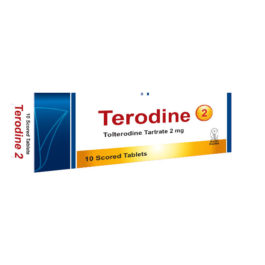
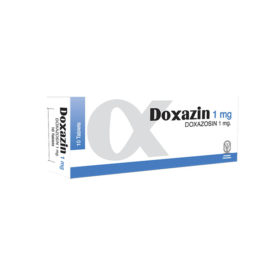
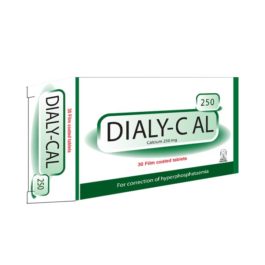
Reviews
There are no reviews yet.